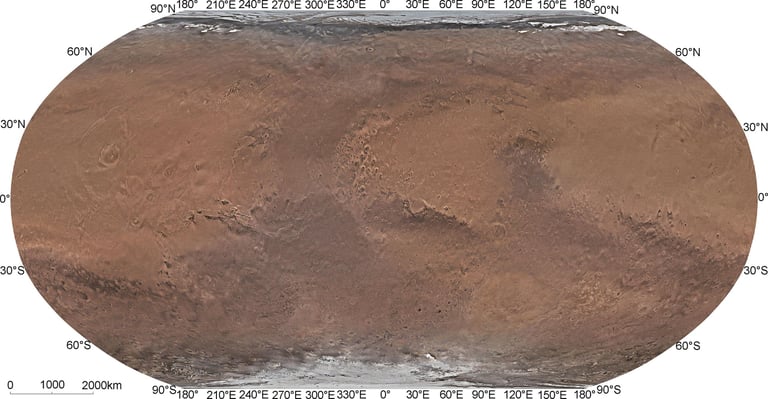China Unveils Most Detailed True-Color Global Map of Mars, Paving Way for Future Exploration
September 3, 2024
This new Mars Global Color Orthomosaic features a spatial resolution of 76 meters, providing a true-color representation of the Martian surface.
The map significantly surpasses the resolution of previous maps produced by other missions, which had notably lower spatial resolutions.
Utilizing advanced image processing techniques, the team created a seamless global mosaic with minimized position deviation between images.
Researchers from the Chinese Academy of Sciences have created the first high-resolution global color image map of Mars, boasting a spatial resolution greater than 1 kilometer.
The Tianwen-1 orbiter's MoRIC instrument played a crucial role, capturing 14,757 images with resolutions ranging from 57 to 197 meters.
Over the course of 1,298 days, the Tianwen-1 orbiter collected numerous remote-sensing images of the Martian surface, contributing to the map's accuracy.
This high-resolution map serves as a geographic reference for future exploration and site selection for both robotic and potential crewed missions planned by NASA and China in the 2030s or 2040s.
Led by Professors Li Chunlai and Zhang Rongqiao, the research team included contributions from multiple Chinese institutions.
China's Tianwen-1 mission, which arrived in Mars orbit in July 2020, consists of six robotic components, including an orbiter and the Zhurong rover.
The mission aims to explore Mars's geology and atmosphere while searching for signs of water and potential life.
This map is not only the highest-resolution true-color global map of Mars to date but also a vital tool for future exploration efforts.
The Mars Mineralogical Spectrometer collected 325 data strips, achieving global coverage and enhancing the map's overall accuracy.
Summary based on 2 sources
Get a daily email with more Science stories
Sources

ScienceAlert • Sep 3, 2024
Stunning New Color Map of Mars Reveals Surface in Unprecedented Detail
Universe Today • Sep 1, 2024
A Global Color Map of Mars, Courtesy of China's Tianwen-1 Mission